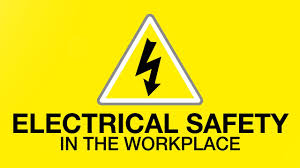While most commercial and industrial spaces can go years without any severe electrical faults or issues. If not properly managed electricity can have severe consequences. With faulty installations and equipment sometimes being the root cause of fires, explosions, electrocutions, and serious human injuries or even death.
Conducting regular electrical safety checks is therefore vital; having them professionally tested will ensure that all personnel and your business remain harm- and risk-free. As part of any company’s health and safety policy, regular electrical testing and assessments should be conducted in line with Health and Safety Executive (HSE) regulations.
Key Assessments and Inspections
Maintaining electrical safety requires a multifaceted approach involving both proactive checks and reactive incident investigation. There are two main categories of tests you can conduct to assess the safety and stability of electrical systems. They are:
- Fixed Wire Testing
- Portable Appliance Testing (PAT)
Fixed wire testing (commonly referred to as EICR testing) refers to the assessment of the main electrical wiring systems under BS 7671. Detailed periodic electrical inspections will usually involve visual inspections, operational testing and reporting of all compiled faults and issues.
PAT testing is a process where all electrical appliances and equipment undergo individual testing and evaluation to ensure they are safe to use. All portable appliances need to be in good working order, while being reliable for earth continuity, insulation resistance, and polarity. If any problems are identified, the appliance must be repaired or replaced.
While not compulsory, it’s recommended that all commercial property owners conduct PAT tests every few months, depending on the nature and use of the appliance or portable device. Meanwhile, fixed wiring installations should be tested and inspected every 5 years or sooner if there is a substantial change in the use or structural layout of the building. In other words, if any renovations or alterations have affected the electrical wiring composition, a fixed wire test must be commissioned.
Assessing Risks: Shock, Fire and Explosion
Electricity has been recognised as a significant workplace hazard if not properly maintained. Some of the main risks of faulty electrical wiring or devices include:
- Electric shocks: Direct contact with live parts or “leakage” from faulty insulation, tools and cords can result in shocks, burns and even severe health issues.
- Arc flashes and blasts: Short circuits can trigger explosive blasts which can cause immediate serious injuries and burns, particularly if metals and flammable chemicals are nearby.
- Fires: Faulty electrical installations and overloaded circuits are a major cause of workplace fires. Electrical fires warrant the use of specific extinguishers and prevention methods.
- Explosions: Certain industrial environments with combustible dust, vapours and gases can literally fuel an electrical explosion if equipment is not properly rated and maintained.
Legal Duties
The primary legislation governing electrical safety includes:
- Health and Safety at Work Act 1974: Employers must ensure the workplace and equipment are safe.
- Electricity at Work Regulations 1989: Electrical systems and gear must be suitably designed, maintained and operated.
- Management of Health & Safety Regulations 1999: Employers must conduct risk assessments and implement adequate precautions.
Specific regulations also mandate that employers conduct regular inspections and testing of fixed installations and portable appliances. Failure to comply can result in heavy fines and even imprisonment for cases of gross negligence.
Key Risk Control
Alongside conducting periodic electrical tests and technical assessments, together with consulting the help of a professional electrician, it’s wise to implement additional risk controls within your team.
To enable complete electrical safety across your organisation, consider the following:
- Avoid overloading circuits, by spreading the use of portable devices to multiple sockets.
- Use properly grounded outlets and quality-marked extension cords to reduce the risk of fires and shocks.
- Keep flammable materials away from electrical outlets to prevent any from catching fire and posing an immediate safety risk.
- Ensure all appliances are in well-ventilated areas for the proper dispersion of heat.
- Verify that all fuses and units are installed correctly and functional; disconnect and replace any faulty equipment as soon as you suspect a fault.
- Remove any electrical cords from areas of high foot traffic to reduce the chances of slips, trips, and falls, while ensuring the integrity of the cords.
- Report and follow HSE recommendations if employees suffer electric shocks, burns, or other injuries.
If an electrical fire cannot be immediately treated using the correct fire extinguishing equipment, call the fire and rescue services immediately.
Achieving Electrical Safety Compliance
Given the diverse risks involved, achieving consistently high levels of electrical safety requires strong commitment and contributions from personnel across the entire organisation:
Senior executives must fully support electrical safety initiatives, approve necessary resources, and audit performance. Managers are responsible for enforcing programmes within their departments and ensuring teams receive adequate supervision and training. Both lines of management must be aligned and in agreement when establishing electrical safety policies and procedures.
Technical staff play key roles in maintaining electrical systems, specifying upgrades, conducting checks, and providing specialised training. However, individual employees need to complete all mandated training, follow policies at all times and immediately report any electrical hazards or concerns. Any skills gaps must be promptly and effectively addressed, with refresher training mandated regularly. As far as subcontractors go, they must also comply with company safety requirements when undertaking work onsite and be held to the same high standards.
By working collectively to provide safe electrical installations supported by robust verification processes, training regimes, safe work practices and a strong reporting culture, organisations can effectively control hazards, prevent incidents and protect their employees.











